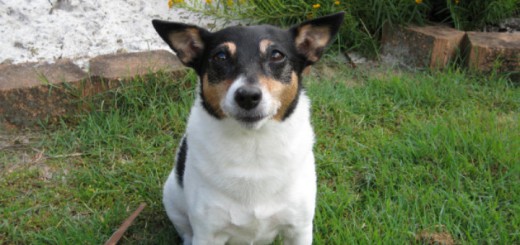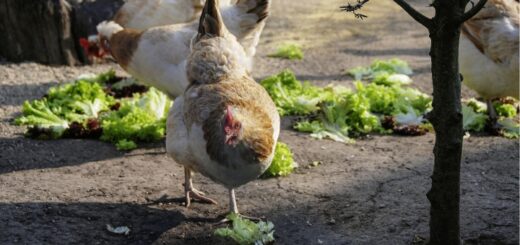The pet food industry is a booming market with just four companies alone “Procter & Gamble”, “Nestle”, “Mars” and “Colgate-Palmolive control a whopping 80% of the world’s pet-food market.
However, the market is changing as fur-parents are becoming very passionate when it comes to the subject of what they feed their pets, and with good reason. Everyone knows it is the same as for us humans, feeding your pet a good diet can contribute to a long and healthy life and even psychological well-being for our pets.
With so many products on the market the question is what is the best food to feed your dog or cat? While the majority of pet owners are still reaching for the supermarket canned or dry food without so much of a thought to what is in the food, there is a growing number of owners starting to question this and now looking for other options that may in fact over time reduce the health related costs potentially linked to additives in commercially prepared pet food.
A raw food-based diet is one approach that has grown in popularity over the last decade. Raw feeding aims to mimic the natural diet that an animal in the wild would consume.
Founder & registered trademark owner of “Barf Diet” and BARF World Distributor Network Dr Ian Billinghurst argues that the dog has evolved over many million years on a natural raw diet and logically, this is the ideal food source. He claims “Modern dogs of any breed are not only capable of eating the food of their wild ancestors, but actually require it for maximum health. This is because their basic physiology has changed very little with domestication despite obvious and dramatic changes in their current physical appearance and mindset”.
Founder of Vets all Natural, Dr Bruce Syme, believes that it is the practice of feeding cooked and processed pet foods, especially cooked meat products, that has resulted in the dramatic decline in health of modern dogs and cats. Dr Syme’s states the reason for creating his product “ It was simply out of frustration, as a vet, that lead me to look for a better answer to these problems. I was embarrassed every time my clients came back for more consultations and more drugs for the same old problems..itchy skin, ear infections, arthritis therapy etc..” He claims “ Cooking food does a lot more than just destroy vitamins” he says, “ it destroys essential fatty acids, denatures proteins and enzymes, damages minerals and micronutrients, and severely decreases the nutritional content of any food source. It can actually produce carcinogenic elements if the cooking temperature is hot enough “. In reverse, the feeding of a natural, raw food diet, consisting of raw meats, whole grains, vegetables, fruits and other supplements, can prevent, and actually “cure” many of the common health complaints mentioned above.
Many (non raw) commercial pet foods, dry foods in particular, often contain a large amount of grains, which is now believed inappropriate for dogs and cats. Because cats are obligate carnivores, a switch to a predominantly meat based raw diet is believed to be especially beneficial (as compared to a raw diet for dogs) due to cats’ relative inability to digest grains.
One of the biggest challenges in deciding whether to feed a raw diet for most people is the inability to break through the last few decades of becoming ‘programmed’ to believe a balanced diet can only come from cooked commercially prepared pet food. That along with the confusing amount of conflicting information on websites and forums claiming the “wonderful virtues” of a raw diet only to read others “condemning raw food” claiming it is unsafe. Most people end up to fearful to change from the familiar and find it too confronting to feed their dog raw meat.
There are two major types of raw diets; Commercial and Home-prepared.
Commercial raw diets, which may be fresh or frozen, supply all of the dog’s requirements and are typically a mince, roll or pattie and totally grain, preservative and colouring free. They contain ingredients such as Meats, Ground Chicken Bones, Organs/Tripe, Whole Egg, Green Lipped Mussel, Seasonal Vegetables (eg: broccoli, celery, spinach, carrot, ground flax seed & bok choy), Seasonal Fruits (eg: Apple, Pear, Grapefruit, Orange, Capsicum).
Home-prepared raw diets usually consist of raw meat and bones, with veggies, fruits and supplements. These diets may vary daily in dietary requirements, however, if designed properly, should meet the dog’s requirements over the long term.
There will always be benefits and risks associated with all choices of food for your pet, the same goes for us humans and the dietary choices we make every day. So choosing what is best for you and your pet is entirely up to you and is solely your decision, what suits someone else’s pet may not suit your pet.
If your pet has a medical condition, it is always best to speak to your veterinarian
before making a major change to his/her diet.
Have you heard about Green Tripe? Read more.
Author Bio: Nikki is pack leader at Pressplay Pets, a blog for the modern age pet parent interested in health & care, news, reviews & personal accounts of unconditional love & at times heartfelt pain of pet parenting. She is also proud mum to cute and cheeky Papillons ‘Amber’ and ‘Indy’ and one crazy Rainbow Lorikeet named ‘Ralph’! Follow my Facebook and Twitter.
Pressplay Pets a blog for the modern age pet parent interested in health & care, news, reviews & personal accounts of unconditional love & at times heartfelt pain of pet parenting!
Follow Us!




Great blog! Diet plays such a huge part in health and also behaviour. Also important to get that vet check up before changing as well, great advice. If anyone is looking for guidance on how to start their pet on a raw diet, visit our website http://www.pawsitiveconnection.com.au 🙂